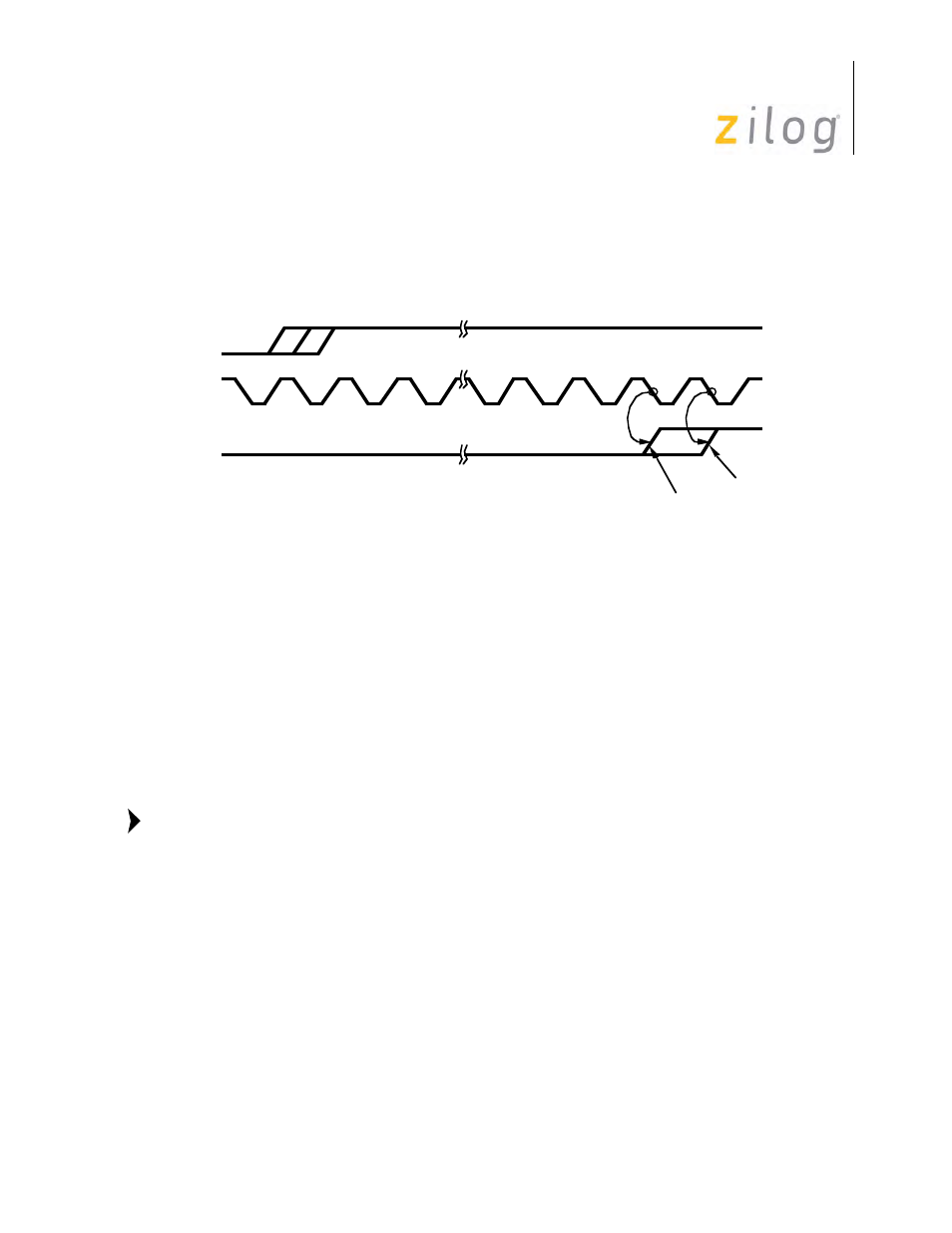Dma requests, Figure – Zilog Z80230 User Manual
Page 70

SCC/ESCC
User Manual
UM010903-0515
Interfacing the SCC/ESCC
63
Care must be taken when this mode is used. The /WAIT pin stays active as long as the Receive
FIFO remains empty. When the CPU access the SCC, the CPU remains in the wait state until data
gets into the Receive FIFO, freezing the system.
Wait On Receive Timing (ii)
DMA Requests
The two DMA request pins /W//REQ and /DTR//REQ can be programmed for DMA requests. The
/W//REQ pin is used as either a transmit or a receive request, and the /DTR//REQ pin can be used
as a transmit request only. For full-duplex operation, the /W//REQ is used for receive, and the /
DTR//REQ is used for transmit. These modes are described below.
DMA Request on ESCC
Transmit DMA request is also affected by WR7' bit D5. As noted earlier, WR7' D5 affects both the
transmit interrupt and DMA request generation similarly.
WR7' D3 is ignored by the Receive Request function. This allows a DMA to transfer all
bytes out of the Receive FIFO and still maintain the full advantage of the FIFO when the
DMA has a long latency response acquiring the data bus.
Bit D5 of WR7' is set to 1 after reset to maintain maximum compatibility with SCC designs. This
is necessary because if WR7' D5=0 when the request function is enabled, requests are made in
rapid succession to fill the FIFO. Consequently, some designs which require an edge to be
detected for each data transfer may not recover fast enough to detect the edges. This is handled by
programming WR7' D5=1, or changing the DMA to be level sensitive instead of edge sensitive.
Programming WR7' D5=0 has the advantage of the DMA requesting to keep the FIFO full. There-
fore, if the CPU is busy, a significantly longer latency can be tolerated without the transmitter
under-running.
/RTxC
/WAIT
SYNC Modes
PCLK
1
2
3
4
5•••8
9
10
11
12
13
ASYNC Modes
Note: